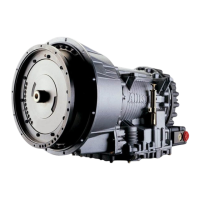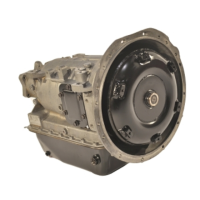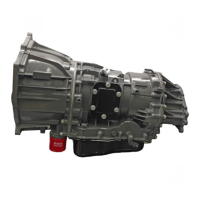ACCELERATOR CONTROL
WARNING: To help avoid injury or property damage caused by sudden
movement of the vehicle, do not make shifts from N (Neutral) to
D (Drive) or R (Reverse) when the throttle pedal is depressed. If you
shift while the throttle pedal is depressed too far, the transmission will
only engage if the throttle pedal is released in the next three seconds.
This may cause a sudden movement of the vehicle. Leaving the throttle
pedal depressed longer than three seconds causes the transmission to
remain in N (Neutral). Avoid this condition by making shifts from
N (Neutral) to D (Drive) or R (Reverse) only when the throttle is
closed.
The position of the accelerator pedal influences when automatic shifting occurs.
An electronic throttle position signal tells the TCM/ECU how much the operator
has depressed the pedal. When the pedal is fully depressed, upshifts will occur
automatically at high engine speeds. A partially depressed position of the pedal
will cause upshifts to occur at lower engine speeds. Excessive throttle position
affects directional changes—shifts from N (Neutral) to D (Drive) or R (Reverse).
DOWNSHIFT AND DIRECTION CHANGE INHIBITOR
FEATURE
NOTE: Turn off the vehicle HIGH IDLE switch, if present, before
shifting from N (Neutral) to D (Drive) or R (Reverse). The shift from
N (Neutral) to D (Drive) or R (Reverse) is inhibited when engine speed
is above idle.
There is no speed limitation on upshifting, but there is a limitation on
downshifting and for shifts that cause a direction change such as
D (Drive)-to-R (Reverse) or R (Reverse)-to-D (Drive).
Manual range downshifts will not occur until a calibration output speed (preset) is
reached. When a range downshift is manually selected and the transmission output
speed is above the calibration speed, the transmission will stay in the range it was
in even though a lower range was requested. Apply the vehicle service brakes or a
retarding device to reduce the transmission output speed to the calibration speed
and then the shift to the lower range will occur.
Directional shifts, D (Drive)-to-R (Reverse) or R (Reverse)-to-D (Drive), will not
occur if selected when throttle position, engine speed, or transmission output
speed is above the calibration limit for a calibration time period. The current
calibration time period for engine speed is 0.5 seconds and for throttle position
and output speed is three seconds.
36

